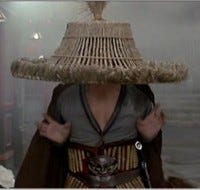
Featured Blog | This community-written post highlights the best of what the game industry has to offer. Read more like it on the Game Developer Blogs.
This is a modification of a piece I wrote for our Kickstarter page. It's update number 33, but really, it's a piece that looks back at four years running a game museum in a hidden location in downtown Oakland on a budget of, basically, $0. I liked how it


Our new home, 3400 Broadway.
We've been running at full speed since we closed the Kickstarter successfully. Despite having closed our Kickstarter, all of our rewards are still available if you'd like to donate through check or PayPal. We'll be redoing the Website in the coming weeks to emphasize this fact, and to make it more obvious where information is located.

The Mongolian Cultural Center was our neighbor for 3 years. They visited often.
We're going to miss our old home, especially the community of people we got to know by being located there. 610 16th St. is filled with non-profits focusing on everything from healthcare, to parenting, to anger management, to homelessness, to Mongolian culture. While some may have seen this as a challenge to overcome, we saw it as a great way to increase our outreach to the people of Oakland.
Parents, stricken with cancer, would drop their kids off while they met with their support groups--the kids escaping into Minecraft or Mario Kart for just a little while.
Local families, whose parents had been sent to court-mandated parenting classes, often left their kids to sit waiting in the dull hallway outside the classroom. We'd constantly find bored children laying on the floor, reading or staring at their phones. We will miss the excitement when they would learn there was a free game-making class down the hall they could join while their parents attended classes of their own.
Attendees to the anger management group upstairs would often wander into the museum after classes let out. Some people may have been worried about this. We, however, found that some of our most passionate new fans came from this class.
Rough-and-tumble characters would stand at the door, politely asking if they could come in, delighted to find they could play all the games of their youth. One fellow called his friend, shouting to him in near hysterics about this amazing museum, demanding he come down and play Street Fighter with him. The pair played for hours, having a great time, never seeming intimidating or angry, merely laughing and hollering as they beat each other up virtually, over and over.
But the group we will probably miss most of all is the Mongolian Cultural Center (sorry, they don't have a Website). They left the building earlier this year, but for three years, we shared a doorway with these wonderful people. They hosted Buddhist ceremonies and meals, teaching sessions with monks, and holiday celebrations. They often fed us in exchange for allowing their kids to have the run of the museum. There was something very comforting about the chanting that wafted over through the shared walls.
It was surreal to have a large population of Mongolians next door, not because of the cultural differences, nor the religious events. It wasn't even surreal because of the delightful costumes they wore on holidays, or the often unexpected celebrations and events.
No, the surreal thing about having the Mongolian Cultural Center next door to the videogame museum was the fact that they played more games than we did.

Ankle Bone Chucking. This isn't from our building, but this is the game we're talking about.
The game, called ankle bone chucking, is basically about slingshotting a small thing at another small thing on a platform about 10 feet away. Imagine air bowling with a sling shot, aiming at only one pin the same size and shape as the ball.
Originally, these would have been sheep ankle bones, but the modern version uses plastic tiles. You could also, very easily, see it as a game played by Ghengis Kahn with the feet bones of his foes. We prefer to think of it as a sheep-based game, however.
Some players even use a literal crossbow to shoot the "ankle bone." It's played in teams of 2, like bowling, and seems to have a number of rounds. Our guess is that missing a shot is tantamount to losing entirely. Observations seem to indicate players may not be allowed to miss at all, or, perhaps, that the game is like HORSE with no shot varience and fewer letters.
Twice a year, the Mongolian Cultural Center played host to an extremely large ankle bone chucking tournament. They'd move all their chairs into the hall, and play the game all day. Instead of a lane between the chucker and the target, the observers just line up on each side of the chucker, forming a human lane. Everyone chants and hoots as things get exciting.
And it moves fast. By afternoon, the tournaments come down to two lanes, then one lane. By the end, it's a wall of bodies on either side, people crammed into the doorway, everyone chanting like Scottish soccer holligans influenced by Bhodisatvas.
Some of the teams that played were populated with monks. It was quite a scene: 50 Mongolian Americans in shiny traditional garb and hats, orange clad monks with shaved heads and quiet smiles, all of them shouting and cheering together, some stuffing dumplings in their mouths, others angrily decrying their performances that day. Many brang very small stools upon which they sat while playing, or while outside smoking between rounds.
Of course, the Mongolian Cultural Center also hosted piano and chess lessons for the group's kids. We were, sadly, the bane of their chess tournaments, as their kids forewent their practice rounds in favor of Minecraft.
One day, their American chess teacher informed us that all the other kids were perfectly welcome to play games during chess club. Except "her," as he pointed to a 12 year old girl engrossed in Minecraft. Evidently, she was the prodigy, and evidently, Minecraft was the biggest danger to her eventual success.
We always thought it was somewhat ironic that we'd host Go club meetups, while they would host chess gatherings. Call it a cultural crossover that had become a braid thanks to time.
Those kids from next door were our biggest fans. The occasional adult visitor from the Mongolian Cultural Center would wander over and ask to play wrestling games (Mongolian's have their own form of wrestling), but for the most part, the Ankle Bone Chuckers just ankle bone chucked.
Until, one day, a young girl who couldn't have been more than 7, wandered over during a dinner next door. She asked to play Mortal Kombat 2. We did not allow her to play Mortal Kombat, obviously, but we showed her some other games and she didn't particularly like them.
We asked, "Why do you know Mortal Kombat 2, specifically?" and her answer was, "My dad and I played it together."
Sure enough, her dad came over shortly thereafter, and when he confirmed that he was fine with her playing the game, we popped in Mortal Kombat 2, and they played quite happily for a while. Evidently, this fellow had played the game a great deal as a kid, and was now sharing it with his daughter.
From that day on, this little girl was our ambassador to the Mongolian Cultural Center. She brought all the other children in to play games, and explained to us the various things that were going on next door. She'd find parents when a kid was in the museum seemingly shirking his duties at the chess board, or dinner table. She'd explain how to play our games to adults who didn't speak English.
This little girl was around 10 the last time she came through the MADE's doors. The Center closed in the spring, and we haven't seen her since. We hope she and her friends are able to come see us in our new location. We're going to miss our old neighbors. But we're looking forward to meeting our new ones, too.
I say all that to say this: we spent four years next to non-profits and organizations that had goals and focuses as diverse as the city of Oakland itself. And yet, no matter the cause, focus or reason for them to exist, we found common ground with them and the people they helped through the played game.
No matter why people were in our building--to learn, to be punished, to heal, to gather, to play--they all found something to enjoy in digital gaming.
Videogames don't divide us. They unite us.
Read more about:
Featured BlogsAbout the Author(s)
You May Also Like









